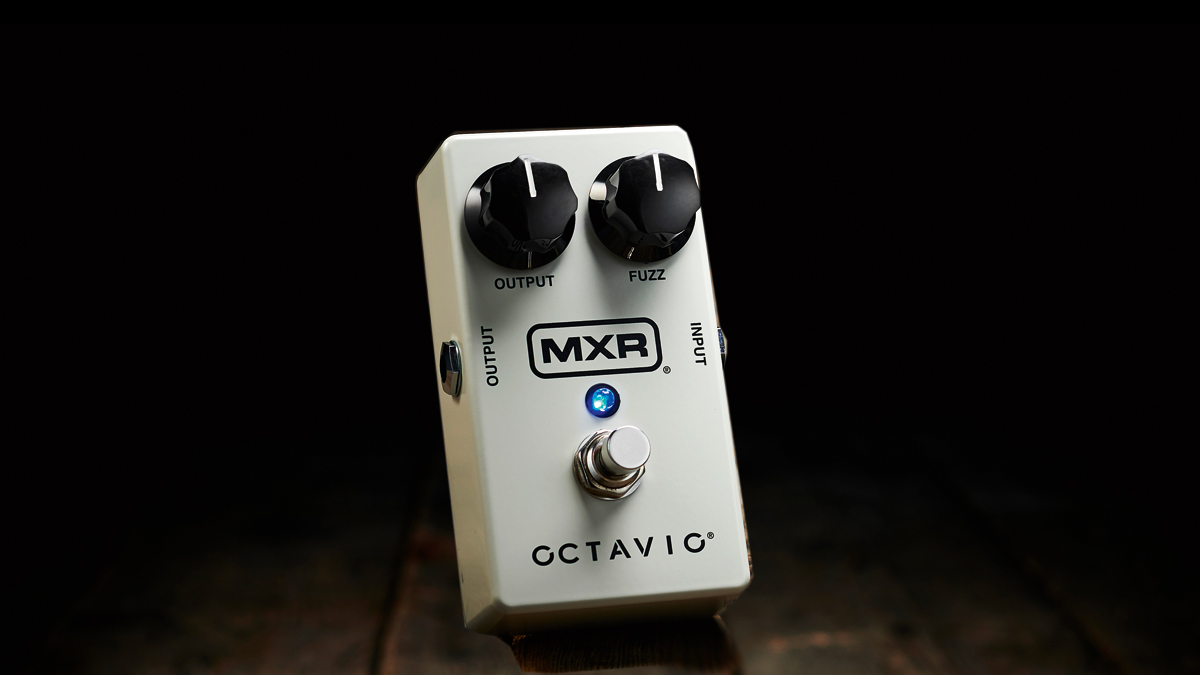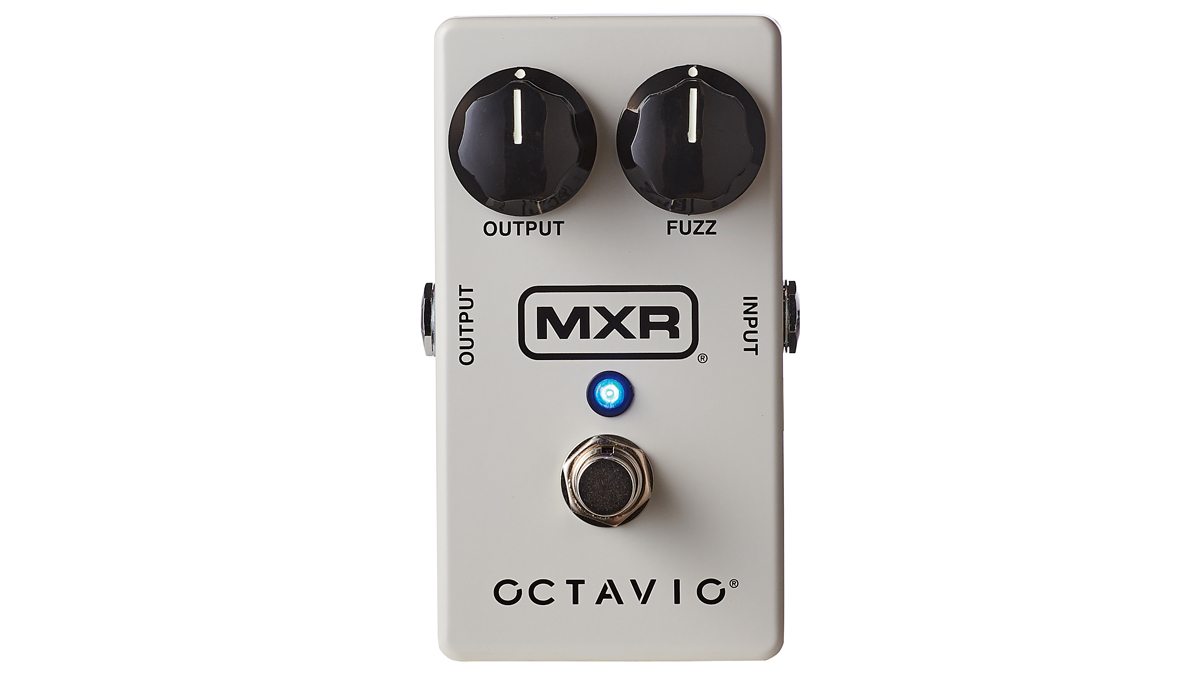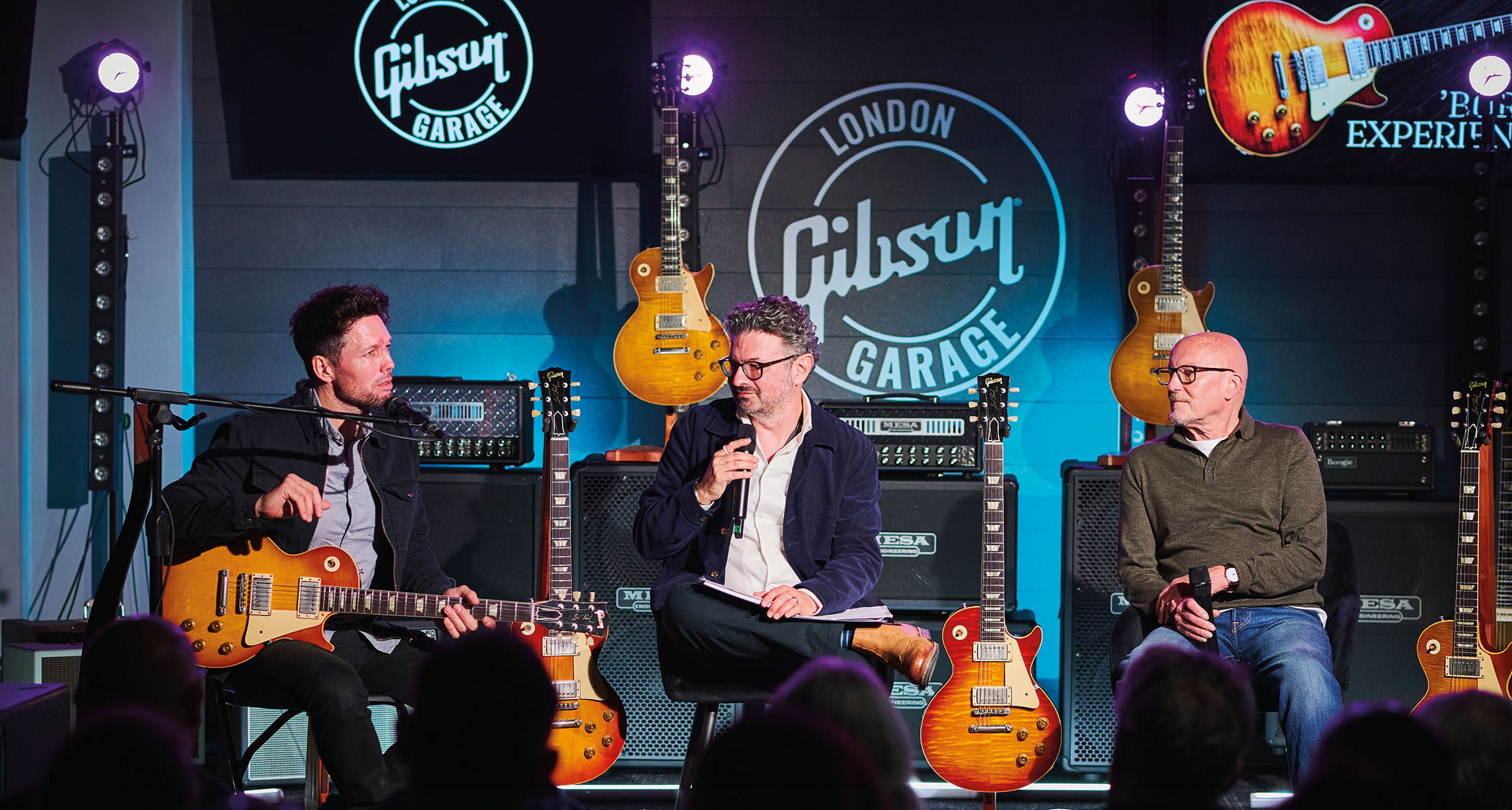Guitar World Verdict
Classic Octavio noises in standard MXR pedal form – you now have a choice if you opt for Dunlop.
Pros
- +
Typically solid and compact MXR build.
- +
Hugely musical octave fuzz tones.
- +
Excellent value.
Cons
- -
No adjustment for the octave.
You can trust Guitar World
This is not the only Octavio pedal in Jim Dunlop’s roster – there’s currently a mini-sized Jimi Hendrix Octavio fuzz pedal with selectable octave – but it is the only one available as a standard two-knob MXR pedal without any artist connection.
And while there are no Hendrix graphics as seen in a previous same-sized MXR version, the lineage can be traced back to the vintage pedal used by Jimi to full effect on Purple Haze. This is silicon fuzz with a gritty edge and that upper octave harmonic bedded into it.
If you turn up the fuzz and try playing standard chords it can sound messy, but doublestops come out sounding really powerful and single-note playing can really take advantage of the singing quality of that upper harmonic overtone, especially in the upper reaches of the neck.
This is pretty much a pedal you can ‘play’ and there’s plenty there (sitar-like sounds, for example) that will reward experimentation with technique.
Specs
TYPE: Octave fuzz pedal
- PRICE: $129.99 / £139
- ORIGIN: USA
- FEATURES: True bypass
- CONTROLS: Output, Fuzz, Bypass footswitch
- CONNECTIONS: Standard input, standard output
- POWER: 9V battery or 9V DC adaptor (not supplied) 5mA
- DIMENSIONS: 64 (w) x 110 (d) x 48mm (h)
- CONTACT: Jim Dunlop
All the latest guitar news, interviews, lessons, reviews, deals and more, direct to your inbox!
Trevor Curwen has played guitar for several decades – he's also mimed it on the UK's Top of the Pops. Much of his working life, though, has been spent behind the mixing desk, during which time he has built up a solid collection of the guitars, amps and pedals needed to cover just about any studio session. He writes pedal reviews for Guitarist and has contributed to Total Guitar, MusicRadar and Future Music among others.



